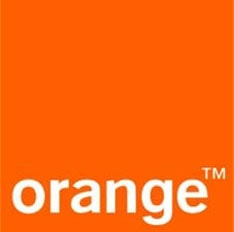MCAFEE THREATS REPORT SHOWS LARGEST MALWARE RISE IN FOUR YEARS
Mobile “Drive-by Downloads”, Use of Twitter for Control of Mobile Botnets,
and Mobile “Ransomware” Among the Latest Trends
Mobilk - McAfee today released the McAfee Threats Report: Second Quarter 2012, which found the biggest increase in malware samples detected in the last four years. McAfee Labs detected a 1.5 million increase in malware since Q1 2012 and identified new threats such as mobile “drive-by downloads”, the use of Twitter for control of mobile botnets, and the appearance of mobile “ransomware”.
“Through proprietary research and investigation, McAfee Labs has been witness to rapid growth in its database or “zoo” of malware samples”. Said Hamed Diab, Regional Director – MENA of McAfee. “ With the malware sample discovery rate accelerating to nearly 100,000 per day, McAfee has identified key malware variants affecting a range of users globally”.
“Over the last quarter we have seen prime examples of malware that impacted consumers, businesses, and critical infrastructure facilities,” said Vincent Weafer, senior vice president of McAfee Labs. “Attacks that we’ve traditionally seen PCs are now making their way to other devices. For example, in Q2 we saw Flashback, which targeted Macintosh devices and techniques such as ransomware and drive-by downloads targeting mobile. This report highlights the need for protection on all devices that may be used to access the Internet.”
Malware on the rise
Explaining about the rise of the malware, Diab said. “As PC malware writers master their craft, they continue to transfer their skills to other popular consumer and business platforms, such as Google’s Android OS. After the mobile malware explosion in Q1 2012, Android malware shows no signs of slowing down, putting users on high alert. Virtually all new mobile malware detected in Q2 2012 was directed at the Android platform, and was comprised of SMS-sending malware, mobile botnets, spyware and destructive Trojans”.
Mobile ransomware and botnets: the latest cybercrime fads
Ransomware, steadily increasing quarter over quarter, has become a popular avenue for cybercriminals. Damage can range from loss of photos and personal files for home users to data encryption and demands for money for large enterprises. Ransomware is especially problematic as it can hold computers and data hostage, instantly damaging machines.
Botnets, a network of compromised computers infected with malicious software and used to generate spam, send viruses or cause Web servers to fail, have also taken center stage again this quarter with infections reaching a 12-month high. With the U.S. as the global hub of botnet control servers, new methods for control have also been uncovered, including the use of Twitter for mobile botnet command and control. As such, the attacker can tweet commands with relative anonymity and all infected devices will follow them.
Thumb drive corrupters, password stealers and web threats
Thumb drive and password-stealing malware showed significant growth in Q2. At nearly 1.2 million new samples, the AutoRun worm spreads from thumb drives by executing code embedded in AutoRun files, repeating the process on any and all drives discovered. Password-stealing malware, at nearly 1.6 million new samples, collects account names and passwords, so an attacker can pose as the victim.
Websites with malicious reputations are influenced by the hosting of malware, potentially unwanted programs, or phishing sites. This quarter McAfee Labs recorded an average of 2.7 million new bad URLs per month. In June, these new URLs were related to about 300,000 bad domains, which is equivalent to 10,000 new malicious domains every day. Of the new bad-reputation URLs, 94.2 percent host malware, exploits or code that have been specifically designed to hijack computers.
Each quarter, the McAfee Labs team of 500 multidisciplinary researchers in 30 countries follows the complete range of threats in real time, identifying application vulnerabilities, analyzing and correlating risks, and enabling instant remediation to protect enterprises and the public. To learn more about the rise in malware in the full copy of the McAfee Threats Report, Second Quarter 2012
Research & Studies
Making Information and Communication Technology (ICT) a central part of efforts to decrease CO₂ (Carbon Dioxide) output has the potential to reduce..
Research & Studies
New research from Ericsson (NASDAQ:ERIC) has suggested that mobile penetration is outpacing births rates across the Middle East. According to the..
Research & Studies
Thanks to mobile broadband, an ever-increasing number of people and devices are connected. This phenomenon provides more opportunities for operators,..

 Vodafone Oman
Vodafone Oman Emirates Telecom
Emirates Telecom  Ooredoo Om
Ooredoo Om Ooredoo Qa
Ooredoo Qa stc Bahrain
stc Bahrain Orange Egypt
Orange Egypt Mobily
Mobily Zain Jo
Zain Jo omantel
omantel STC
STC Emirates Du
Emirates Du Asiacell
Asiacell Etisalat Egypt
Etisalat Egypt  Telecom Egypt
Telecom Egypt jawwal
jawwal Orange Jo
Orange Jo Umniah
Umniah Zain Sa
Zain Sa Bahrain Batelco
Bahrain Batelco Zain Bh
Zain Bh Wataniya palestine
Wataniya palestine Kuwait Viva
Kuwait Viva  Zain Kw
Zain Kw Vodafone Qa
Vodafone Qa MTN Syria
MTN Syria Syriatel
Syriatel Sabafon
Sabafon Zain Iq
Zain Iq MTN Yemen
MTN Yemen Ooredoo Kw
Ooredoo Kw Vodafone Egypt
Vodafone Egypt  Samatel
Samatel Huawei
Huawei Samsung
Samsung MOTOROLA
MOTOROLA Lenovo
Lenovo Alcatel
Alcatel LG
LG Nokia
Nokia Sony Ericsson
Sony Ericsson HTC
HTC BlackBerry
BlackBerry Siemens
Siemens Acer
Acer Asus
Asus Sony
Sony VK
VK APPLE
APPLE BenQ-Siemens
BenQ-Siemens Sagem
Sagem Eten
Eten HP
HP Panasonic
Panasonic Amoi
Amoi Toshiba
Toshiba Sharp
Sharp Sonim
Sonim Bird
Bird Mitac
Mitac Philips
Philips Vertu
Vertu Pantech
Pantech Micromax
Micromax Maxon
Maxon Haier
Haier I-mate
I-mate Gigabyte
Gigabyte I-mobile
I-mobile Kyocera
Kyocera BenQ
BenQ Microsoft
Microsoft Telit
Telit Connect
Connect Sendo
Sendo Mitsubishi
Mitsubishi SEWON
SEWON NEC
NEC DELL
DELL Thuraya
Thuraya Neonode
Neonode Be
Be Qtek
Qtek Bosch
Bosch Palm
Palm MWG
MWG Fujitsu Siemens
Fujitsu Siemens XCute
XCute WND
WND INQ
INQ O2
O2 Innostream
Innostream Benefon
Benefon Google
Google



















